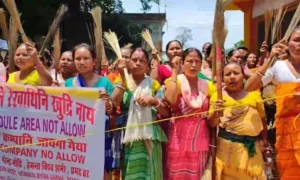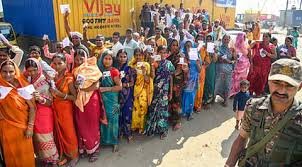KOHUR asserts that demographic growth has occurred across all communities in Manipur, consistent with national trends, and should not be used to justify exclusionary narratives or administrative decisions.
BY PC Bureau
As debates around ethnic identity and demographic changes continue to shape the politics of Manipur, the reliability and interpretation of historical census data have come under scrutiny. A central question arises: Can census data be reliably used to understand demographic trends in Manipur—especially when misused for political ends?
In his detailed rebuttal to former Chief Minister N. Biren Singh—submitted to Governor A.K. Bhalla—H.S. Benjamin Mate, Chairman of the Kuki Organisation for Human Rights (KOHUR), has raised serious concerns about the selective and misleading use of census data to question the legitimacy of Kuki presence in Manipur. Citing both historical inaccuracies and deliberate manipulation, Mate argues that the 1881 census, which has been frequently invoked by former Chief Minister Biren Singh, is fundamentally flawed and should not be used to support claims of demographic distortion or “illegal migration.”

READ: Big Win for Tribals: Adani Plant Out of Kokrajhar?
The presentation of census figures by Biren Singh, particularly drawing from the 1881 census, warrants careful examination. His use of selective statistics to imply unchecked demographic growth among certain hill communities—especially the Kukis—has raised concerns among scholars, civil society groups, and data analysts.
The KOHUR memorandum seeks to unpack the limitations of historical census data in Manipur and to caution against its politicized misuse.
- The 1881 Census: A Flawed Foundation for Comparison
The first and most critical point is that the 1881 census data for the hill areas of Manipur was not based on actual enumeration, unlike in the Imphal valley. Instead, it relied on broad estimates with limited reach into remote tribal areas, particularly in the southern hills.
At the time, present-day districts like Churachandpur, Pherzawl, and parts of Chandel were not even covered in the census operation. As a result, the recorded population of the Kuki groups was either absent or drastically underrepresented. Using this incomplete data to compare with the 2011 census figures is not just methodologically unsound—it is deeply misleading.
- Misrepresentation of Growth Rates
Biren Singh’s cited growth rates are presented to imply an unnatural population increase among the Kuki and Mizo groups. However, a closer examination reveals clear distortions:
Group 1881 (Est.) 2011 Growth
Meitei 1,17,103 13,53,999 1156%
Naga Groups 59,904 6,98,402 1165%
New Kuki & Mizo Groups Data omitted 4,48,214 1765%
The 1881 census omits entire tribal regions, so comparing it to 2011 figures inflates the appearance of growth, particularly for hill communities. Furthermore, growth over a 130-year span should never be measured in raw percentages without acknowledging natural population growth trends and improved census methods over time.
READ:READ: Major Drug Bust in Imphal Valley Shakes Ethnic Narrative
For a more accurate assessment, decadal growth rates are the global standard—not arbitrary comparisons across centuries.
- The 1901 Census: A More Reliable Baseline
If historical comparison is needed, the 1901 census offers a far more reliable benchmark. By this time, the southern hills had been brought into the fold of enumeration, and boundaries of the Manipur princely state were more clearly defined (by 1894–96). It is this census that first attempted a more complete and structured demographic accounting.
Group 1901 2011 Growth
Meitei 1,64,146 13,53,999 824%
Naga Groups 69,641 6,98,402 1002%
Kuki & Mizo Groups ~47,042 4,48,214 952%
It’s important to note that all ethnic groups in Manipur show high population growth rates, consistent with national trends over more than a century. The 1901 census itself acknowledged this growth, stating:
“Between 1881 and 1901, the population of Manipur increased by 63,395 or 28.6%. This increase must be due either to natural growth or increased accuracy of enumeration, as there is practically no immigration to Manipur…” (Census of India, 1901, p.24)
The remark highlights a key point: improved enumeration—not immigration—accounted for much of the increase in recorded population during that period.
- Political Intent Behind Data Distortion
The selective use of flawed census data appears not to be an innocent mistake. Rather, critics argue that it is part of a deliberate strategy to construct a narrative of “infiltration” by certain groups to justify exclusionary policies or administrative decisions.
By misrepresenting the demographic history of the Kuki people, some political actors hope to influence public opinion and gain support for measures aimed at denying tribal rights or recognition. This undermines both the credibility of historical records and the principles of democratic governance.













